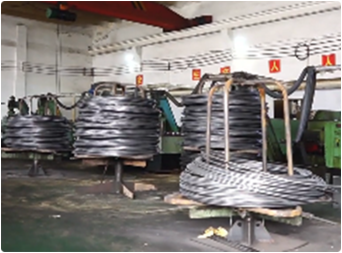12월 . 12, 2024 10:41 Back to list
304 threaded rod
Understanding 304 Threaded Rod Features and Applications
When it comes to construction and manufacturing, choosing the right materials is crucial for ensuring durability, strength, and reliability. One such versatile component that plays a pivotal role in various applications is the 304 threaded rod. This article will delve into the characteristics, benefits, and typical uses of 304 threaded rods.
What is a 304 Threaded Rod?
A 304 threaded rod is a type of fastener that is often used in conjunction with nuts and washers to create strong joints in a variety of settings. Made from 304 stainless steel, this rod is known for its excellent corrosion resistance, high-temperature stability, and good mechanical properties. The term threaded refers to the continuous spiral grooves that run along the length of the rod, enabling it to be used in tension applications.
Composition and Properties
304 stainless steel is an austenitic grade of stainless steel that primarily comprises chromium (18%) and nickel (8%). This unique composition gives it a combination of beneficial properties that make it ideal for many applications
1. Corrosion Resistance 304 stainless steel exhibits remarkable resistance to rust and corrosion, which makes it suitable for both indoor and outdoor applications, including environments with high humidity or exposure to various chemicals.
2. Temperature Resistance This material can withstand temperatures of up to 870 degrees Celsius (1600 degrees Fahrenheit) in intermittent use and up to 925 degrees Celsius (1700 degrees Fahrenheit) in continuous service, making it ideal for high-temperature applications.
4. Formability 304 stainless steel is relatively easy to form and fabricate, allowing for the production of threaded rods in various sizes and lengths according to industry needs.
304 threaded rod

Applications of 304 Threaded Rods
Due to its unique properties, 304 threaded rods find applications in numerous industries, including
1. Construction In the building sector, these rods are commonly used as anchors, supports, and tie rods in both residential and commercial construction. Their corrosion resistance ensures longevity when exposed to the elements.
2. Manufacturing In manufacturing plants, threaded rods facilitate the assembly of machinery and equipment. They are also useful for securing structural components and frames.
3. Marine Applications Given their resistance to saltwater corrosion, 304 threaded rods are frequently used in marine environments, including boat construction and dock installations.
4. Automotive Industry These rods are essential in automotive manufacturing for securing parts together due to their strength and resistance to wear.
5. General DIY Projects For home improvement enthusiasts, 304 threaded rods serve as an excellent choice for creating custom furniture, shelving systems, and a range of other DIY applications.
Conclusion
In summary, the 304 threaded rod is a vital component in various sectors due to its exceptional strength, corrosion resistance, and versatility. Understanding its capabilities and applications can help engineers, architects, and hobbyists alike to make informed decisions when selecting materials for their projects. Whether it’s in construction, manufacturing, or everyday applications, the reliability of 304 threaded rods ensures that they will continue to be a preferred choice in the industry for years to come. Choosing the right threaded rod can be the difference between a well-constructed project and one that falters under pressure. Therefore, when considering materials for your next endeavor, don’t overlook the importance and functionality of the 304 threaded rod.
-
Threaded Rods in Art Where Structural Integrity Meets Aesthetic Vision
NewsApr.11,2025
-
Optimize Industrial Fastening with Precision-Crafted Hex Nut Solutions
NewsApr.11,2025
-
Master Fastening with Premium Stainless Steel Carriage Bolts
NewsApr.11,2025
-
Hex Sleeve Anchors: Smart Choice for Industrial-Grade Concrete Fastening
NewsApr.11,2025
-
Hex Head Timber Screws: Reinventing Safety in Modern Livestock Enclosures
NewsApr.11,2025
-
Elevate Efficiency with Robust Beam Clamps
NewsApr.11,2025


